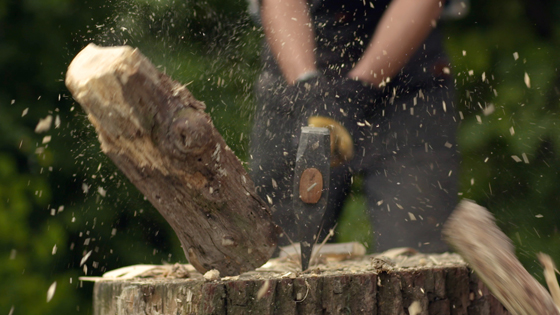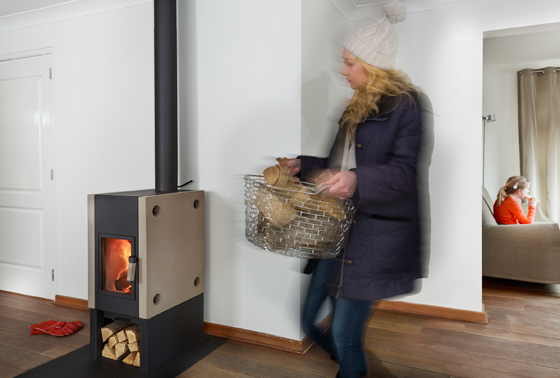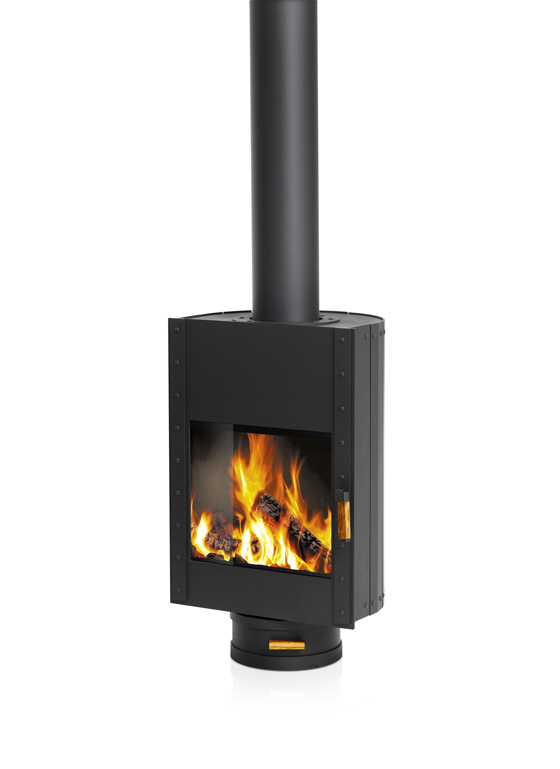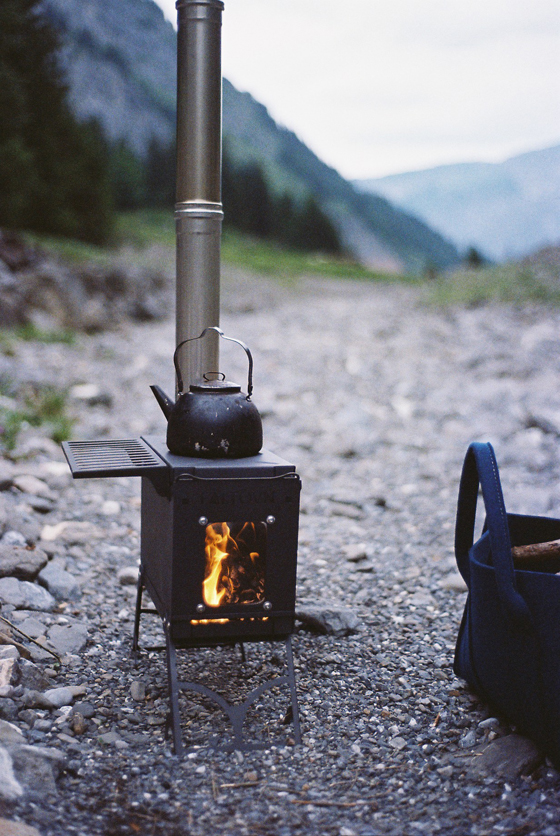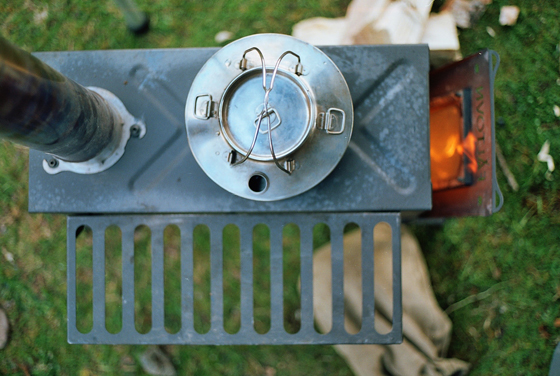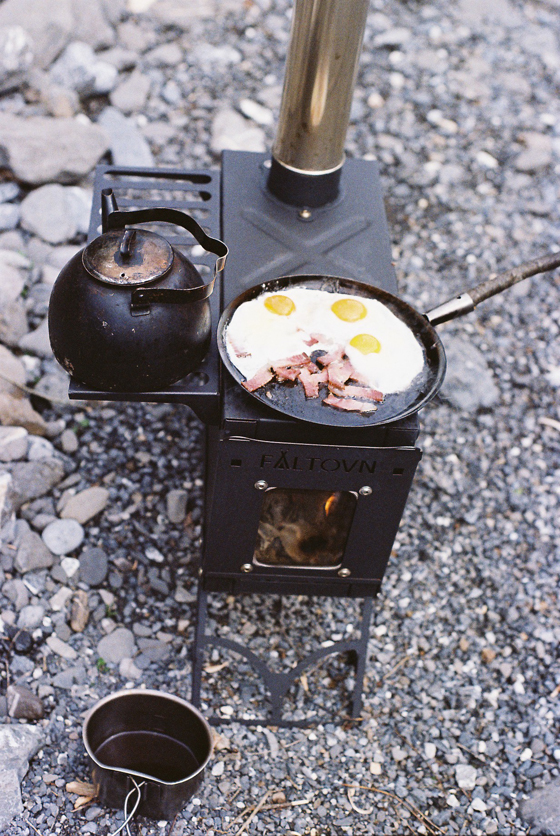Campfire Stories
Brand story by Simon Keane-Cowell
Oirschot, Netherlands
06.06.16
It's often said that good design is legible design – objects that communicate their use and their usefulness. In the case of premium woodburning-stove manufacturer HARRIE LEENDERS, there's a compelling story behind many of the products, too.
Outward-bounding Bart Leenders, Harrie Leenders MD and son of the eponymous founder, takes to the wilderness for inspiration and energy. "It's my therapy," he explains

Outward-bounding Bart Leenders, Harrie Leenders MD and son of the eponymous founder, takes to the wilderness for inspiration and energy. "It's my therapy," he explains
דScotland is wet,” says Bart Leenders.
This may, as the locals say, be stating the bleeding obvious, but this man truly knows what it means to be out in the wiles without waterproofs. Not quite up the proverbial creek without a paddle, this self-confessed outward-bounder and seasoned bushcrafter – who also happens to be managing director, as well as poster boy, of premium woodburning-stove manufacturer Harrie Leenders – hits Mother Nature and hard when things get hard business-wise. It’s here, throwing caution to the wind (and other elements) he finds inspiration, renewed energy, as well as himself again.
“It’s my therapy,” Bart says, with a refreshing candour that anyone who knows the man knows well. “It’s like pressing a reset button. It all started when I hit a point where I really needed to take time out. So I decided to go into the Scottish glens with a colleague and some friends.” Torrential rain, fire-making, survival techniques. You get the picture. “For a long time, it felt like playing truant. That when I went to a remote part of Sweden or elsewhere, it wasn’t work. But I’m getting over that.”
For Bart Leenders, the personal is the professional. “You have to listen to your instinct. That’s when you come up with products that you actually surprise yourself with and other people”
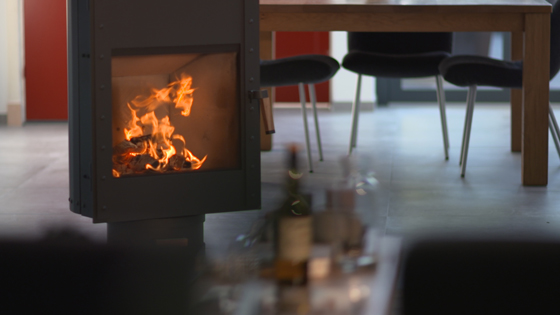
For Bart Leenders, the personal is the professional. “You have to listen to your instinct. That’s when you come up with products that you actually surprise yourself with and other people”
×Good thing, too. For Harrie Leenders is a company whose commercial success in recent years has been built on the back of instinct. Doing What Feels Right. Bart, who took over management of the company from his father, the eponymous Harrie Leenders, in 1998, is nothing if not authentic. Dovetailing with the way he talks candidly not only about his personal life but also the company (“We did have a shitty period”) is his absolute adherence to natural quality materials, such as real wood and leather, and to local production in the Netherlands.
You see, Bart has been on journey for some time to listen more to his gut when it comes to making creative decisions and taking risks. With loins girded, he’s in the process of recasting the Harrie Leenders collection, dropping several products, including all of their garden fireplaces (“Why not just make a fire with stones instead?”), and introducing a number of new ones. The guiding principle: authenticity. Having spent years producing very fine, contemporary fireplaces that look like furniture, the fire-loving MD is rewriting the brand script by directing the focus once again on stoves that look, feel and read as stoves. That give their users a much more authentic (there’s that word again) experience and relationship with fire. “I’ve always had a natural dissatisfaction,” he explains, “to a product once it’s finished. And, for me, we’d gone too far in creating products whose functionality wasn’t legible.”
A Harrie Leenders bestseller, the Boxer Plus stove takes a cue from the original Boxer, first launched in 1983 but later withdrawn from production due to falling sales: "It’s synonymous with my youth, at a time when my parents had the company"
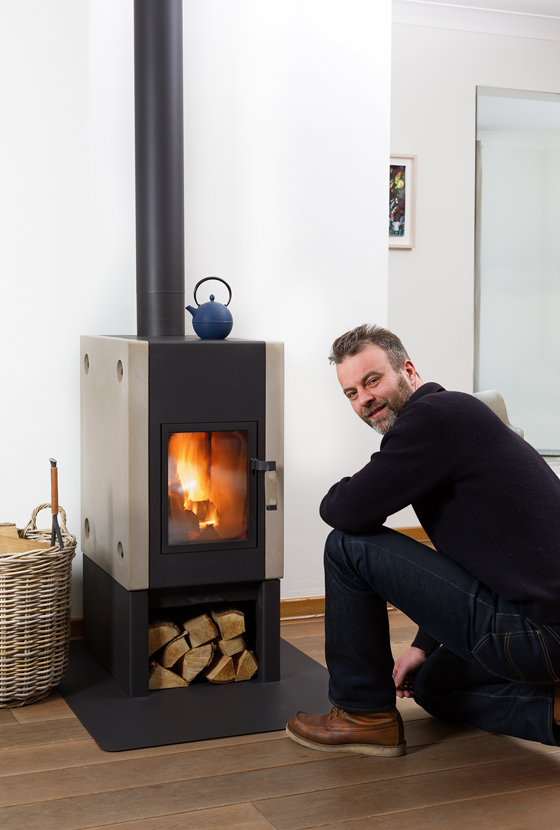
A Harrie Leenders bestseller, the Boxer Plus stove takes a cue from the original Boxer, first launched in 1983 but later withdrawn from production due to falling sales: "It’s synonymous with my youth, at a time when my parents had the company"
×An old labrador
You’ve probably gathered by now that Bart Leenders is a bit of a raconteur. And an uncensored one at that. But if the story of his company is bound up with that of the lives and experiences of father and son, then many of the Harrie Leenders products themselves also have a narrative behind them. Take Boxer Plus, for example. It’s the offspring of the original Boxer stove from 1983 that Bart grew up with at home and which many visitors to the Harrie Leenders showroom still remember fondly. “It’s synonymous with my youth, at a time when my parents had the company.”
All the more painful, therefore, when their accountant told them they should stop making it. Fair enough, says Bart, seeing as production had fallen to just seven units a year, and each unit required building by hand, but nonetheless not easy to let go. “It’s like someone asking you to get rid of your faithful labrador because it’s too old.”
What happened next was completely illogical, given the sound business reason for Boxer’s demise, but quintessentially Harrie Leenders. Bart proposed they build another Boxer. No launch date, no great commercial plan behind it. Just a labour of love. So he made a few sketches, which were followed by a dummy. “We wanted to build just one,” explains Bart. “There was no intention to produce a new model. We wanted, though, to put everything we knew about combustion technology into it.”
And they did. With its deep form and small opening at the front, it’s designed to perform. Pick your own metaphor, but Bart likes to liken its fitness for purpose to a sports car: “You’d make it agile, light, with a low chassis.” Four years of experimentation, including working out how to inject air into the combustion chamber through visually concealed inlets, resulted in the Boxer Plus, a hero product that, in stark contrast to its predecessor, has become one of the brand’s bestsellers. “What it taught me is that you need to keep doing what you like to do. Always.”
In contrast to its predecessor, Boxer Plus has become a hero product for Harrie Leenders with its innovative concealed air-injection technology for optimal internal combustion: "It taught me you need to keep doing what you like to do"
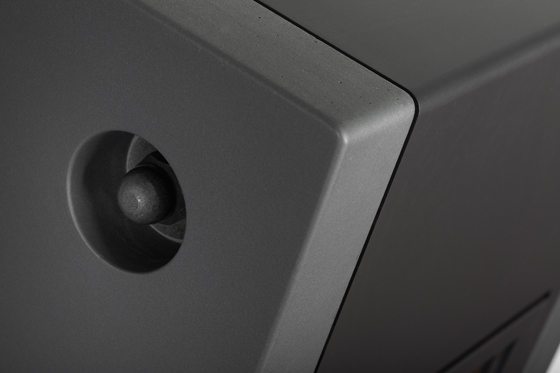
In contrast to its predecessor, Boxer Plus has become a hero product for Harrie Leenders with its innovative concealed air-injection technology for optimal internal combustion: "It taught me you need to keep doing what you like to do"
×From the ashes
“I spelled it wrong,” says Bart of Stor, a robust stove with another story behind it. “It should have been Stoer,” he explains, “which is Dutch for ‘strong’. But I speak Norwegian, thanks to an ex-girlfriend from Norway, and slipped up, spelling it Norse-style instead. Still, it’s a nice word and reflects what the product is.”
Stor’s toughness was born out of a tough lesson for Harrie Leenders. When Bart discovered that one of his employees, aided by the company accountant, was engaged in embezzlement, the fall-out was bigger than just the dismissal of a colleague. It was the loss of a friend he’d trusted. It was particularly distressing for Bart’s father, who, already no longer involved in the management of Harrie Leenders, now felt particularly helpless.
“So I asked my father if he wanted to work on this idea with me. We’d recently introduced Fuga eL, but somehow it wasn’t a stove anymore. It didn’t read as one. It’s functionality wasn’t legible. It could be a television. You can’t even see how to open it. So, I wanted to create a new stove, which you could see immediately was a stove.” The challenge Bart set for himself and Harrie was to use the same combustion system that was used for the Fuga eL, but to foreground the stove-ness, as it were, of the product. To celebrate its very construction. “We asked ourselves questions like ‘What does a stove do?’ It protects people. ‘What do things that protect people look like?’. ‘What does usefulness look like?’”
Following such lines of enquiry led father and son to look at, among other things, armour, the Terracotta Army of China’s Shaanxi province, and an old railway bridge in Germany, which had been hand-riveted, the labour involved in its construction clearly visible – a characteristic that Stor would go on to embrace emphatically. Getting a handle on the stove’s handle would prove to be a journey, too. With steel, silicone and leather all tried but ultimately rejected, they decided on wood. But not any old wood. “My father mentioned that he had a carpenter working on kitchen cabinets for him and that he was using wood from the olive tree of my father’s garden in Italy. And that there were some pieces left. I thought this was just fantastic. Yes! My father then said he wanted to make the handles himself. And I said yes again. Now, that’s authenticity.”
Wearing its honest and robust construction with pride, the Stor wood-burning stove features olive-wood handles fashioned by Harrie Leenders himself from his own tree – the ultimate in authenticity

Wearing its honest and robust construction with pride, the Stor wood-burning stove features olive-wood handles fashioned by Harrie Leenders himself from his own tree – the ultimate in authenticity
×Field of dreams
“I’d been in Sweden, using these hired tents and stoves,” explains Bart when discussing the Harrie Leenders Fältovn field oven. “The stoves were made of stainless steel and were shit. Functional, yes, but the combustion technology was bad.”
So began the challenge to create something better. “I came home and started working on it myself. I thought, if I could use my knowledge of combustion technology to create a portable stove that people would be able to make themselves while living in a refugee camp, then they would be able to heat their tents, boil water and save fuel, instead of using all these open fireplaces that produce a lot of smoke and come with safety issues.”
Parameters were set from the get-go, locating the project truly outside Bart’s comfort zone. The new field oven was to be constructed without the use of a welding machine and a bending machine, and, even though the latter was eventually (and reluctantly) deployed in order to give the prototype a more robust construction, laser-cutting technology and clever design meant the former was indeed eschewed.
A profound dissatisfaction with the field ovens Bart Leenders had been using while living outdoors ("They were shit. The combustion technology was bad”) was the catalyst for the development of Fältovn, dedicated to Swedish survival expert Lars Fält
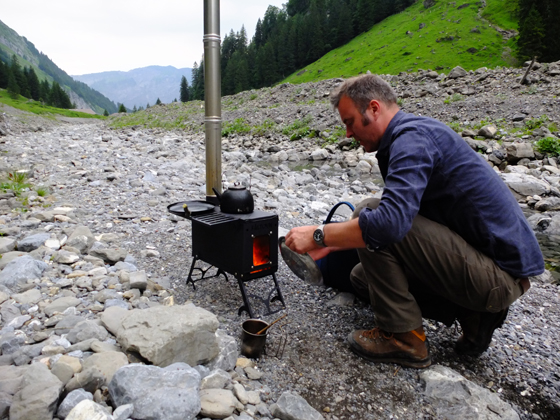
A profound dissatisfaction with the field ovens Bart Leenders had been using while living outdoors ("They were shit. The combustion technology was bad”) was the catalyst for the development of Fältovn, dedicated to Swedish survival expert Lars Fält
×The Fältovn is dedicated to the military-trained Swedish survival expert Lars Fält, who Bart had, as he puts it, “the privilege of training with. He deserves having a stove named after him. Last year, he invited me to stay as a guest with him and his wife. His library is one of a kind, as is his survival school. It’s in a military compound and you’d probably never get in usually.” Back on civvy street, the Fältovn, made locally and which comes with its own canvas bag, with full-grain leather details and bearing the motto ‘Always good weather’, is selling in its hundreds.
This is the way that Bart continues to roll, come rain or shine. For him, the personal is the professional. “You have to listen to your instinct. That’s when you come up with products that you actually surprise yourself with and other people.”
And that’s no tall story.
Fältovn comes in a kit bag with a full-grain leather shoulder strap that bears the legend "Always good weather" – a mindset that runs through the Harrie Leenders brand
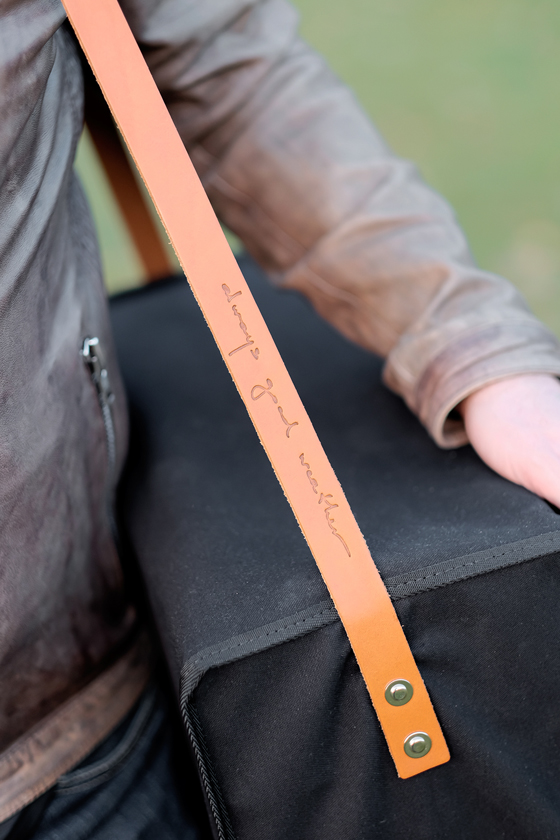
Fältovn comes in a kit bag with a full-grain leather shoulder strap that bears the legend "Always good weather" – a mindset that runs through the Harrie Leenders brand
×

